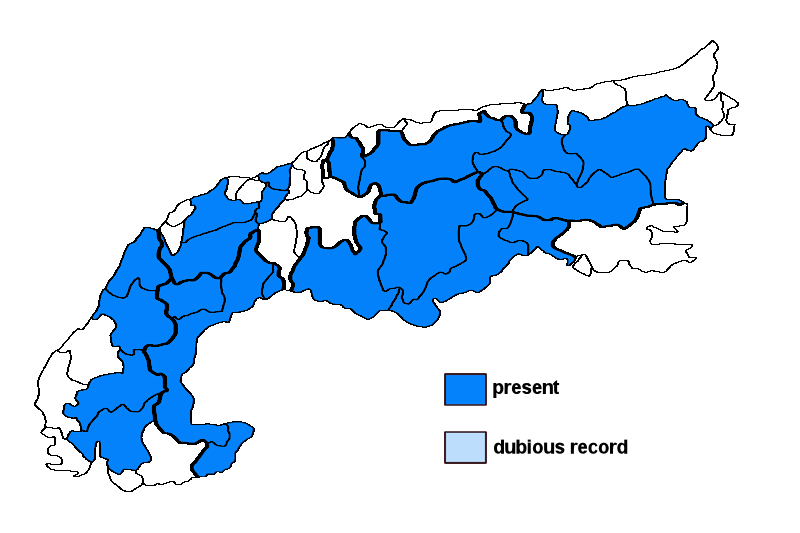Myriospora smaragdula (Wahlenb. ex Ach.) Nägeli ex Uloth
Syn.: Acarospora amphibola Wedd., Acarospora flavorubens Bagl. & Carestia, Acarospora isotorquensis Alstrup, Acarospora lesdainii Harm. ex A.L. Sm., Acarospora murina Sandst., Acarospora smaragdula (Wahlenb. ex Ach.) A. Massal., Acarospora smaragdula (Wahlenb. ex Ach.) A. Massal. subsp. lesdainii (Harm. ex A.L. Sm.) Clauzade & Cl. Roux, Acarospora undata Clauzade, Cl. Roux & V. Wirth, Silobia smaragdula (Wahlenb. ex Ach.) M. Westb. & Wedin, Trimmatothelopsis smaragdula (Wahlenb. ex Ach.) Cl. Roux & Nav.-Ros.
Lichenised.
Substrate: siliceous rocks, intermediate rocks (such as calciferous schists), metal-rich siliceous rocks
Altitudinal range: from the montane belt (potential vegetation: deciduous forests dominated by Fagus sylvatica and closed coniferous forests with Picea abies) to the alpine belt (potential vegetation: treeless Alpine grasslands and tundras, to the lower limit of perennial snow and the equilibrium line of glaciers)
Note: a cool-temperate to boreal-montane, perhaps circumpolar, variable species of steeply inclined to underhanging surfaces of base- and often metal-rich, sometimes weakly calciferous siliceous rocks, mostly in upland areas; widespread throughout the Alps.
Austria: Vorarlberg; Tirol; Salzburg; Kärnten; Steiermark; Switzerland: Bern; Schwyz; Uri; Valais; France: Alpes-de-Haute-Provence; Haute-Alpes; Savoie; Haute-Savoie; Italy: Friuli; Veneto; Trentino Alto Adige; Lombardia; Piemonte; Valle d'Aosta; Liguria;





